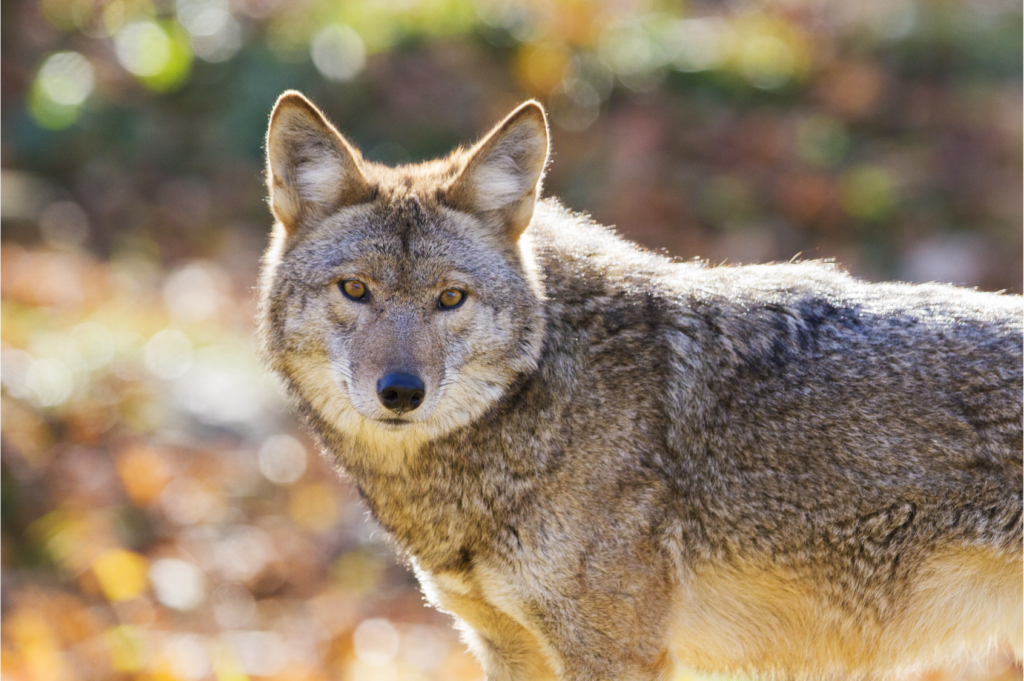By the Editorial Team
Local experts, inspired by Yellowstone National Park, the United States Department of Agriculture, the Washington Department of Fish and Wildlife, and the King County Department of Natural Resources and Parks, have formulated an innovative plan to simultaneously curb Vashon Island’s growing coyote and deer populations.
“These intelligent and adaptable animals now manage to occupy almost every conceivable habitat type, from open ranch country, to densely forested areas, to downtown waterfront,” explained Max Kaniss, director of the new Vashon branch of the WDFW. “This is why we need to capture a family of gray wolves from Yellowstone and relocate them here. With their help, we will regain the vibrant biodiversity of Vashon’s ancient ecosystem, allowing us to address the current imbalances caused by lack of a true apex predator.”
While some have expressed reservations, local County and State authorities are responding to a steadily rising volume of complaints from stakeholders. These are said to run the gamut from requests for complete extermination, to a middle ground of registering routine pet, livestock, and vehicle losses, to environmentalist demands to promote full inter-species harmony.
“The potential benefits of the proposed program appear to address and satisfy each of these groups, while mitigating acknowledged risks,” says Tawp Downe, a well-known government solutions expert. “We can easily micro-chip and track the wolves, measuring their ongoing impact in a safe, cost-effective, and humane manner. Eventually, we hope that this ‘track and tag’ process will become an annual event that Islanders can participate in and help to manage.”
“And,” Downe continued cheerfully, “if they try to pull a Lassie, our new drone technology will automatically track, tranquilize, and net them long before they get to Mercer Island.”
In consultation with park rangers, Downe and Kaniss have drafted a plan to equip the wolves with cutting-edge RFID (radio frequency identification) and mini-cam technologies, designed to integrate smoothly with planned AI updates. These platforms will enable residents to sign up for a subscription based Adopt-a-Cub pilot program – or be signed up automatically, based upon AI recommendations. Both are an exciting pathway to sustainable long-term funding. Additionally, a 24/7 interactive Maury Island Wolf Den website is underway. The most optimistic growth scenarios anticipate a sufficiently thriving and stable ecosystem, allowing for the re-introduction of caribou from Alaska by 2030.
In keeping with environmental harmony, new Islander and former zookeeper, Sitee Knowes-Et’al, insists that optimal safety can be maintained if every Island household with livestock, pets, or small children (with access to the outdoors) keeps at least three dogs of a larger breed. “A nucleus of three versatile guard dogs is enough to ward off attacks by all manner of predators,” she explained. Conveniently, active chapters in Seattle and Tacoma stand ready to supply rejected urban pit bulls and other attack-style dogs in need of adoption and rehabilitation.
Still, there is always an element of risk. “We have to recognize that wolves, like coyotes and deer, are wild animals and not pets,” notes Max Kaniss. “But they absolutely LOVE freeze-dried liver treats, and we recommend that Vashon residents carry a small bag with them everywhere. Preferably a couple of bags when on trails. If a single animal or an actively hunting pack approaches, toss at least one bag in their direction and promptly retreat to a safe distance or, where possible, into a stoutly built brick shelter.”
Next in this series will be “Rehabilitating Black Bears to Vashon – Pros & Cons.” And, if this story seems too good (or outrageous) to be true, refer to the print date of this newspaper (or solve this month’s crossword puzzle).

